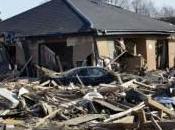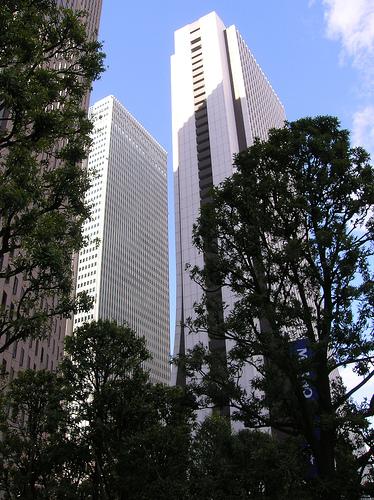The disaster that hit Japan March 11 and destroyed 60,000 buildings in less than an hour broke the concept of security architecture and has led to teachers as Toyo Ito and Kazuyo Sejima Pritzker prizes and Tadao Ando to join the reconstruction. "With the earthquake, the concept of everything we've been building over the past 50 or 100 years has been zero," stated the architect Toyo Ito, the creator of famous buildings such as the Sendai Mediatheque (2001), whose roof partially collapsed by the earthquake.
Overwhelmed by a tragedy that was "beyond what we imagined," Ito acknowledged that modern architecture failed to address the possibility of a natural disaster of this size and consider a scenario that included safe nuclear plant. "That was the mistake," insisted the architect, who is grouped with four other distinguished colleagues to submit proposals for reconstruction: Hiroshi Naito, Riken Yamamoto, Kengo Kuma and Kazuyo Sejima, the latter winner of the Pritzker Prize 2010 along with fellow SANAA study, Nishizawa.
For Ito, author of the Torres Porta Fira de Barcelona, the group can contribute to the reconstruction plan covering the holes in the government, ie, thinking about the details that make life easier for refugees and local residents. The quake, according to the architect, forced to reflect on the meaning of architecture and public service, which must be above the concept of urbanism and humanize it to include "the relationship between nature and humans, and between people themselves ".
Now, for example, is necessary to install temporary houses for people to maintain their privacy, "says Ito, who visited Sendai in late March, the provincial capital of Miyagi and one of the cities hardest hit by the disaster, assess the extent of the damage. To help those displaced by natural disasters has long experience another major Japanese architects, Shigeru Ban's innovative, Pritzker Prize jury between 2006 and 2009 and creator of buildings like the Museum Pompidou-Metz (France).
Besides being part of the elite of the architecture, Ban has worked for over fifteen years of building temporary shelters for evacuees, it has in countries like Haiti following last year's earthquake, Sichuan (China) in 2008, Sumatra in 2004 or Kobe in 1995. The hallmark of their shelters is that they are manufactured with low cost materials, mainly cardboard cylinders treated with polyurethane, Ban becomes surprisingly strong structures.
Now, the architect is focused on improving the lives of thousands of evacuees in the northeast of their country in a dozen clubs that serve as shelters built with tubes and fabric, small rooms overlooking a valuable independent space for families . Ban devised by the assembly is simple and fast and has been held in several provinces, including Fukushima, epicenter of Japan's nuclear crisis, at a cost of 1,500 yen ($ 12.5 euros) per square meter, funded by www donations.
shigerubanarchitects. com and his own pocket. In the reconstruction of affected areas also plays a fundamental role the architect Tadao Ando, Pritzker Prize 1987 and named to the official committee charged with designing a restoration plan for affected areas will be presented in June. Speaking to the newspaper "Mainichi," Ando said that Japan is in a "critical of various aspects" that should lead to reflect not only on the role of politicians, but the citizens themselves.
Considered that the victims must be supported by all the Japanese and how to create a tax for the reconstruction: "The prime minister must make clear that, for Japan to work we must help each other," he said. He insisted, among other things, the need for a support program for orphans of the tragedy, a tax exemption scheme for victims and a plan to address the country's energy problems.
To Tadao Ando, this is the "critical time" to raise a company in Japan, from the standpoint of environmental work. 


Overwhelmed by a tragedy that was "beyond what we imagined," Ito acknowledged that modern architecture failed to address the possibility of a natural disaster of this size and consider a scenario that included safe nuclear plant. "That was the mistake," insisted the architect, who is grouped with four other distinguished colleagues to submit proposals for reconstruction: Hiroshi Naito, Riken Yamamoto, Kengo Kuma and Kazuyo Sejima, the latter winner of the Pritzker Prize 2010 along with fellow SANAA study, Nishizawa.
For Ito, author of the Torres Porta Fira de Barcelona, the group can contribute to the reconstruction plan covering the holes in the government, ie, thinking about the details that make life easier for refugees and local residents. The quake, according to the architect, forced to reflect on the meaning of architecture and public service, which must be above the concept of urbanism and humanize it to include "the relationship between nature and humans, and between people themselves ".
Now, for example, is necessary to install temporary houses for people to maintain their privacy, "says Ito, who visited Sendai in late March, the provincial capital of Miyagi and one of the cities hardest hit by the disaster, assess the extent of the damage. To help those displaced by natural disasters has long experience another major Japanese architects, Shigeru Ban's innovative, Pritzker Prize jury between 2006 and 2009 and creator of buildings like the Museum Pompidou-Metz (France).
Besides being part of the elite of the architecture, Ban has worked for over fifteen years of building temporary shelters for evacuees, it has in countries like Haiti following last year's earthquake, Sichuan (China) in 2008, Sumatra in 2004 or Kobe in 1995. The hallmark of their shelters is that they are manufactured with low cost materials, mainly cardboard cylinders treated with polyurethane, Ban becomes surprisingly strong structures.
Now, the architect is focused on improving the lives of thousands of evacuees in the northeast of their country in a dozen clubs that serve as shelters built with tubes and fabric, small rooms overlooking a valuable independent space for families . Ban devised by the assembly is simple and fast and has been held in several provinces, including Fukushima, epicenter of Japan's nuclear crisis, at a cost of 1,500 yen ($ 12.5 euros) per square meter, funded by www donations.
shigerubanarchitects. com and his own pocket. In the reconstruction of affected areas also plays a fundamental role the architect Tadao Ando, Pritzker Prize 1987 and named to the official committee charged with designing a restoration plan for affected areas will be presented in June. Speaking to the newspaper "Mainichi," Ando said that Japan is in a "critical of various aspects" that should lead to reflect not only on the role of politicians, but the citizens themselves.
Considered that the victims must be supported by all the Japanese and how to create a tax for the reconstruction: "The prime minister must make clear that, for Japan to work we must help each other," he said. He insisted, among other things, the need for a support program for orphans of the tragedy, a tax exemption scheme for victims and a plan to address the country's energy problems.
To Tadao Ando, this is the "critical time" to raise a company in Japan, from the standpoint of environmental work.



No comments:
Post a Comment